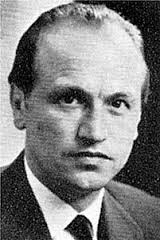1974 Hermann Zapf
Writer and book designer / Darmstadt, Germany

Born in 1918 in Nuremberg and deceased in Darmstadt in 2015, the font designer Hermann Zapf discovered his passion for calligraphy during his apprenticeship as a retoucher. When he moved to Frankfurt/Main in 1938 and worked as a self-employed typographer and calligrapher, he designed his first type "Gilgengart". After his time in the Reich Labor Services and as a prisoner of war in France, he returned four weeks after the end of the war back to Nuremberg.
In the following years from 1947 to 1956 he worked as an artistic director for the D. Stempel AG in Frankfurt and also as a lecturer in typography at the university in Offenbach/Main. During this time, Zapf designed twelve stamps for the Deutsche Bundespost. He also worked as a graphic designer for the publishers Suhrkamp and Insel, the Büchergilde Gutenberg and the Carl Hanser Verlag. He also designed the important fonts Palatino, Aldus and Optima, which are still in widespread use today.
Since the 1960s, he was a member of the "International Center for the Typographic Arts (ICTA)" and taught in the 1970s and 1980s alternately at the Technical University of Darmstadt and the Rochester Institute of Technology. In 1977, with Aaron Burns and Herb Lubalin, he set up the Design Processing International Inc. in New York, which aimed to develop programs for typographic structures that could be used by non-specialists. The company existed until 1986.
Together with Donald E. Knuth Zapf published a documentation of the font family Euler in 1989, which was developed for the American Mathematical Society, under the title "AMS-Euler. A New Typeface for Mathematics". Overall, he designed over 200 fonts. In 1974, Hermann Zapf was awarded the Gutenberg Prize by the City of Mainz and the International Gutenberg Society for his forward-looking work, especially in relation to the transition from metal type to photosetting.